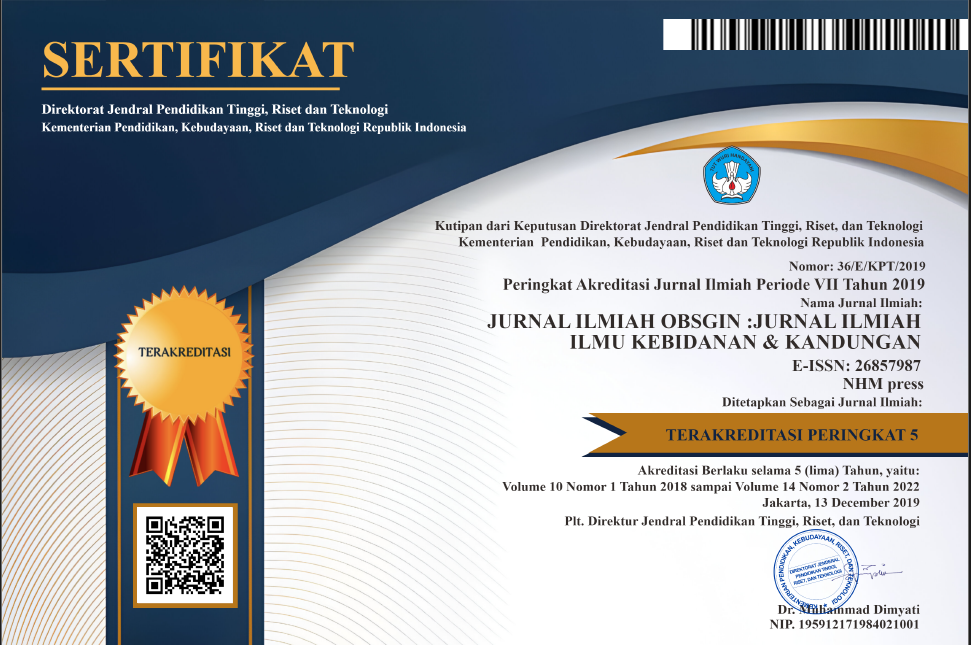FAKTOR-FAKTOR YANG BERHUBUNGAN DENGAN MINAT IBU DALAM PEMILIHAN ALAT KONTASEPSI IMPLAN DI KLINIK PRATAMA KEMALA KECAMATAN CIKARANG PUSAT KABUPATEN BEKASI TAHUN 2023
Abstract
WHO data shows that users of contraceptive implants throughout the world are still below injectable contraceptives, pills, condoms and IUDs, especially in developing countries. The percentage of use of injectable contraceptives is 35.3%, pills 30.5%, IUDs 15.2%, while implants are under 10%, namely 7.3%, and other contraceptives are 11.7%. Currently, it is estimated that 30% use an IUD/IUD in China, 13% in Europe, 5% in the United States, 6.7% in other developing countries (Nurmalita Sari et al., 2020). The aim of this research is to identify factors related to maternal interest in choosing an implant contraceptive device at the Pratama Kemala Cikarang Clinic, Bekasi Regency in 2023.
The research method used is a cross sectional survey method. The analysis used is the Chi Square Test. This research uses primary data from filling out questionnaires by each respondent. The total population in this study was 197 people and the sample taken was 132 respondents. The sampling technique uses accidental sampling or a sampling technique based on chance, that is, anyone who meets the researcher by chance can be used as a sample.
The results of the research show that the variables that are related to interest in implants at the Pratama Kemala Clinic, Cikarang Pusat, Bekasi Regency in 2023 are knowledge (P value 0.004), age (P value 0.001), and husband's support (P value 0.003), while the factors that are not related are education. (P value 0.558), parity (P value 0.082), and employment (P value 0.859).
It is hoped that with this research, mothers of couples of childbearing age will be able to increase information and knowledge about the side effects, disadvantages, advantages and contra-indications of contraceptives so that they can choose which method of contraception is good by consulting and asking lots of questions to health workers to gain insight into knowledge about the contraceptives. contraception is wider and can provide information from anywhere, for example from social media.











